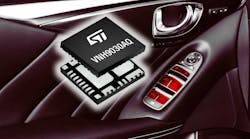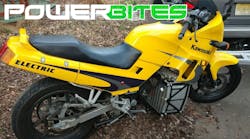Low-Loss 1,700-V SiC MOSFETs Fit Renewable, Energy Storage, EV Charging Apps
A family of 1,700-V SiC D-MOSFETs and power modules developed by SemiQ meet the needs of medium-voltage, high-power-conversion applications. Such apps include photovoltaic and wind inverters, energy storage, electric-vehicle and road-side charging, uninterruptible power supplies, and induction heating/welding.
The QSiC 1,700-V MOSFETs deliver low switching and conduction losses as well as low capacitance. They feature a rugged gate oxide for long-term reliability, with 100% of components undergoing wafer-level burn in (WLBI).
The MOSFETs are available either as a bare die, fabricated with a thermally efficient aluminum (Al) top side and nickel/silver (Ni/Ag) bottom side, or housed in a TO-247-4L package. Both versions support a maximum power-dissipation level of 564 W, with a continuous drain current of 83 A (at 25°C, 61 A at 100°C) and a pulsed drain current of 250 A (at 25°C).
The two 4-pin power modules feature a 38.0- × 24.8- × 11.7-mm SOT-227 design. They deliver an increased power dissipation of 652 W and increased continuous drain current of 123 A (at 25°C – GCMX015A170S1E1) and 88 A (at 25°C – GCMX030A170S1-E1).
In addition to low switching losses, both modules have a low junction-to-case thermal resistance of 0.19 °C and 0.36 °C per watt. They also feature an easy-mount design for direct mounting of the isolated package to a heatsink.
The half-bridge module is housed in a 61.4- × 106.4- × 30.9-mm, 9-pin S3 package. It has a power dissipation of 2,113 W with a continuous drain current of 397 A and a pulsed drain current of 700 A.
Datasheets for the 1,700-V MOSFETs and modules can be downloaded at the company's product home page.
Next in This Issue of PowerBites
More PowerBites
About the Author
Lee Goldberg
Contributing Editor
Lee Goldberg is a self-identified “Recovering Engineer,” Maker/Hacker, Green-Tech Maven, Aviator, Gadfly, and Geek Dad. He spent the first 18 years of his career helping design microprocessors, embedded systems, renewable energy applications, and the occasional interplanetary spacecraft. After trading his ‘scope and soldering iron for a keyboard and a second career as a tech journalist, he’s spent the next two decades at several print and online engineering publications.
Lee’s current focus is power electronics, especially the technologies involved with energy efficiency, energy management, and renewable energy. This dovetails with his coverage of sustainable technologies and various environmental and social issues within the engineering community that he began in 1996. Lee also covers 3D printers, open-source hardware, and other Maker/Hacker technologies.
Lee holds a BSEE in Electrical Engineering from Thomas Edison College, and participated in a colloquium on technology, society, and the environment at Goddard College’s Institute for Social Ecology. His book, “Green Electronics/Green Bottom Line - A Commonsense Guide To Environmentally Responsible Engineering and Management,” was published by Newnes Press.
Lee, his wife Catherine, and his daughter Anwyn currently reside in the outskirts of Princeton N.J., where they masquerade as a typical suburban family.
Lee also writes the regular PowerBites series.





